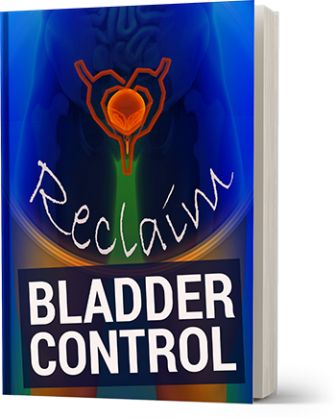The urinary incontinence of young women is usually caused by complicated childbirth. In fact, urinary incontinence is a common problem for older women. During menopause, the amount of female hormones (estrogens) is reduced, while these hormones are responsible for the flexibility of tissues in a female body, as well as for the functionality of ligaments and muscles of the pelvic floor.
Such a situation decreases the tone of the urethra, which causes an involuntary urine leakage in case of even very slight stress, e.g. when coughing or sneezing, not to mention heavy objects lifting. Is there any solution? The new book “Reclaim Bladder Control” describes a very effective method, which helps to cure female urinary incontinence. It really helped my aunt. Don’t wait anymore, download and read all the details in Alice Benton’s guide.
Types of urinary incontinence and their peculiarities
There are three types of urinary incontinence, which can be identified by their specific symptoms.
Stress incontinence: this type of incontinence may occur when you participate in some types of physical activity—such as when you are exercising, coughing, sneezing, or laughing. The activity causes the sphincter muscle, which normally holds your urine in the bladder, to weaken and release urine.
Urge incontinence: Occurs when you feel a sudden and strong urge, or need, to urinate. Very soon after the urge strikes, you lose control of your bladder. Often, you do not have time between the urge and the loss of urine to make it to a bathroom. The weirdest thing is that your bladder can be almost empty in such situations.
Overflow incontinence: a mixed form of incontinence, which combines symptoms of both stress and urges incontinence.
It doesn’t really matter which type of incontinence you have, because all of them are giving additional emotional stress to women, which is one of the main reasons for this pathology. This vicious circle is really dangerous and women can stay inside it for a long time.
Reasons for female urinary incontinence
Even though there are many reasons, which can cause female urinary incontinence, the vast majority of them is caused by excessive stress and fatigue:
Complicated childbirth with traumas – one of the reasons for stress incontinence. Such childbirth not only tears soft tissues of perineum but also stretches pelvic floor muscles.
Excessive weight is also considered to be one of the reasons for stress incontinence.
Gynecological surgery, such as uterus and ovaries cyst or tumors removal, can also cause urinary incontinence.
Menopause hormonal background changes. Sphincter becomes more weak, due to the lack of muscle flexibility, which is getting older and affected by hormonal changes.
A specific feature of the female body. It is known that urinary incontinence is more common for women and not for men. Such a situation is caused by specific features of the female body: female urethra has only 3-4 cm in length, while male one can reach up to 24-30 cm. The width of the female urethra is 6-10 mm, while the male one has only 4-7 mm. That’s why women need to have strong pelvic floor muscles, which protect the wide and short urethra from urine leaking.
Ways and methods to cure urinary incontinence
It’s vital to start any medical operation only when you know the reason of your urinary incontinence, which can be caused not only with hormonal changes or complicated childbirth but also with common urinary infections and tumor diseases. It’s obvious that in such cases you won’t reach anything by training your pelvic floor muscles. Non-medicated treatments for urinary incontinence are:
- bladder training;
- pelvic floor muscles training;
- physiotherapy;
The main idea of such training to create a urination schedule and follow it. You have to learn how to follow it under the strict control of your doctor. Intervals between urination have to be increased step by step.





